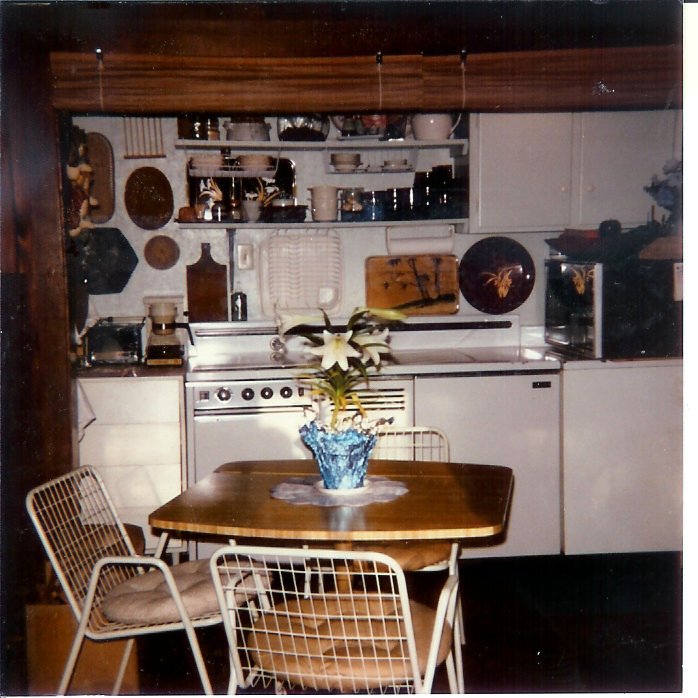This is the third in the series of “Early Bellevue Cabins”. The Sharp Cabin (also known as the Sharp Cottage), can be found at the Bellevue Botanical Garden. This structure has also been moved multiple times and has undergone changes to its appearance.
2014.033.073 - Sharp Cabin at Bellevue Botanical Garden
2014.045.003 - The interior of Cottonwood Cabin kitchen, May 1985.
In 1883, James Sharp applied for an 80- acre homestead located near NE 8th and 124th Ave NE in Bellevue. He built a one- story log cabin on his claim and later built a more permanent dwelling. Both were on the property when it was sold in 1926 as part of the Cottonwood Hill Plat. An Armenian-American family, the Davajian’s, eventually settled on the site and remodeled the larger home in 1932. Three generations lived there until it was sold in January 1952. Several owners followed and eventually, the wooden stilts under the cabin were removed. The second floor became the entry just it appears today.
In 1989, the property was sold and scheduled to be developed as townhouses. Scott Parker was renting the cabin and approached the Bellevue Historical Society and the Bellevue Parks Department about preservation of the dwelling. It was moved to the Botanical Garden and eventually relocated when the garden was renovated. It is now used as a meeting room for volunteer groups and staff.
2004.030.003 - Side view of the Sharp Cabin, 1964.
Please walk around the cabin and observe the carved scrollwork with two eight-pointed stars cut into the wood. The style of workmanship is rarely found in cabins and perhaps was done by a local craftsman. John Zweifenhofer, a cabinet maker, lived south of Northup Way, and could have been the mystery builder. He passed away in 1910 so could have been responsible for the second -floor artistry.
Unfortunately, the cabin is not open to the public, so the inside features must be viewed from the windows. The walls are paneled and at the peak of the gabled ceiling, there is a cluster of three wooden eight-cornered stars. An interpretive sign is located near one of the garden paths.
Resources
Eastside Heritage Center Archives





